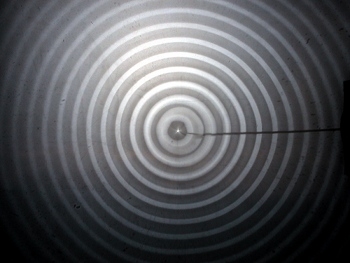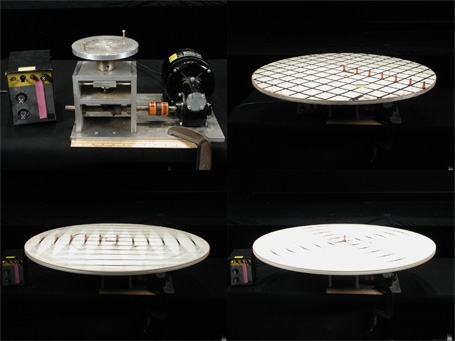Plane of pendulum oscillation appears to change due to rotation of Earth.
What it shows:
Due to the rotation of the Earth, the plane of oscillation of a pendulum will rotate with respect to the surface beneath it. We expect a rotation of about 10˚/hr at our latitude of 42.˚
How it works:
Here the observer standing on the Earth resides in the reference frame, with the swinging pendulum oscillating in a rotating frame. From the pendulum's point of view, it keeps oscillating in the same plane, but the Earth spins below it. The deflection from its original plane...
Read more about Foucault Pendulum
